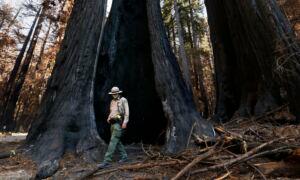White House proposes modifications to protect old-growth forests across 128 land management plans.
The Biden administration has proposed restricting logging within old-growth forests to ensure millions of acres are conserved.
Exceptions would be made in cases where such trees need to be cut down in order to reduce fuel hazards, to protect public health and safety, or for “culturally significant uses,” among others.
The proposed amendment will be available to view on June 21 and will be open to comments from members of the public for 90 days after it is published.
Throughout the comment period, the Forest Service will conduct public engagements and field tours, including virtual information sessions on the matter, while continuing to consult with Native American tribes and work with state and local governments, conservation districts, and other agencies, it said.
“The Forest Service’s plan will help safeguard these iconic stands of trees through science-based management and conservation strategies that can be adapted to unique local circumstances on national forests.”
Old-Growth Forests Important For Ecosystems
Mr. Vilsack added that the USDA looks forward to receiving feedback on the draft proposal from tribal, state, and local governments, industry partners, conservation organizations, and others.
He said these stakeholders “will be critical partners in the forest management and conservation actions needed to ensure the maintenance and growth of old-growth forests into the future.”
Forest Service chief Randy Moore also said that old-growth forests are important for ecosystems, capturing carbon and contributing to clean air, soil, water, and diverse habitats.
“Old forests also provide other benefits like subsistence and cultural uses, outdoor recreational opportunities, and sustainable local economic development,” he said.
The proposed amendment will provide guidance that can be adapted locally to “support multiple uses, including proactive stewardship of old forests to reduce wildfire risk and create long-term resilience in a changing climate,” Mr. Moore added.
The proposal, which forms part of the Biden administration’s climate and conservation priorities, stops short of suggesting an all-out ban on old-growth logging.
Timber Industry Says Proposal ‘Politically Driven’
Meanwhile, the timber industry has criticized the proposal, with the American Forest Resource Council, a trade group that advocates for sustained yield timber harvests on public timberlands throughout the West, calling it “politically driven.”
The trade group said the proposed amendment would “not address the primary threats to old-growth forests on National Forest System lands, including severe wildfires, insect infestations, and disease that have already devastated nearly 700,000 acres of old-growth forests on federal lands over the past two decades.”
“This politically driven process has consumed agency staff and resources that should have been devoted to addressing the growing forest health and wildfire crisis,” the trade group said.
The Forest Service and the Department of the Interior’s Bureau of Land Management (BLM) manage approximately 32 million acres of old growth and 80 million acres of mature forests on federally managed lands, accounting for a total of 112 million acres.
Old-growth forests represent 18 percent of those lands, and mature forests make up another 45 percent of all forested land managed by the two agencies.
Original News Source Link – Epoch Times
Running For Office? Conservative Campaign Consulting – Election Day Strategies!


